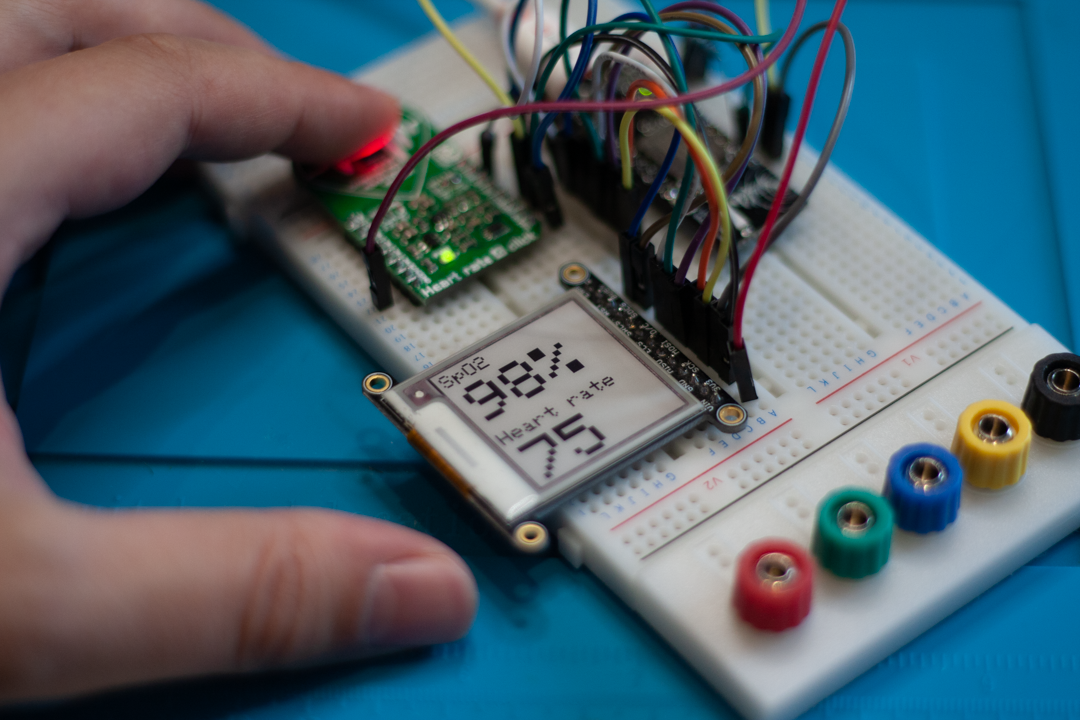COVID-19 Open-Source Innovation: Global Scale Remote Health Monitor
The COVID-19 Detect and Protect Challenge is crowdsourcing open-source hardware innovations to tackle the disease. Every one of the 300+ innovations submitted is made freely available, with all instructions needed for others to build them. Here, we talk to Grand Prize Winner Eivind Holt, about his Global Scale Remote Health Monitor.
Tell us about your solution. How does it address a specific need around COVID-19 response/recovery?
A patient suspecting COVID-19 infection could contact local health services by internet or phone and have this device sent by mail the next day. The device would measure the patient’s vitals and other metrics, which would be sent directly to her electronic health record until she was deemed healthy or in need of medical attention. The patient would put it in their finger to take regular measurements until cleared of any suspected infection, or further measures have to be taken.
My solution takes advantage of new sensor networks (LoRaWAN, NB-IoT) to enable sensors for use in healthcare where it previously has been impractical. I have also taken advantage of emerging open international standards for exchange of medical information to enable the measurements to actually reach healthcare providers in the systems they use.
I have built prototypes for different applications in healthcare for the past few years, for hospitals, nursing homes and home care. The pandemic poses new needs and challenges and I quickly realised my concept could provide something missing in existing solutions.
What was the inspiration behind the project?
I had been making prototypes for several areas, domestic, urban but mostly healthcare for a few years. These prototypes take advantage of new sensor networks that are energy efficient, cheap and provide extreme range. I realised that healthcare had the greatest potential for making an impact. This is an area I have insight into through work, and my wife who is a doctor.
It is also a very complex and demanding domain. About a year ago my heart suddenly stopped while I was at work. It was caused by a genetic disorder and there were no prior signs. Thankfully, some of my co-workers are nurses and doctors and they managed to revive me.
I spent a long time in hospital and that gave me an opportunity to really study the workflow and how equipment was used. My conclusion was that great electronic equipment is being used, but very few are connected and almost none are integrated with the EHR or electronic charts that is supposed to be the basis for clinician's decisions. I left the hospital with an Implantable Cardioverter Defibrillator, one that reports daily to a monitoring system.
Still, this is a closed system and not integrated with my medical journal. Should I be admitted to another hospital in the future, there is no automated way relevant information from this monitoring system will be available. Its range is also limited to the room where a base station is placed. These issues have been the base for my motivation in using new technology and standards for improving healthcare. I am privileged to live in Norway, a country with very good healthcare. If these potential improvements are present here, they most likely will be relevant for other parts of the world.
Why do you think open-source is so important in responding to COVID-19?
The global innovation that has risen in response to the pandemic has shown how open-source is an effective way to share new ideas and new ways to put together existing technology. When I started out as a developer, I would learn by reading thick books and taking classes. Nowadays I Google tutorials and use forums, but most importantly, I read source code. For all the tutorials I have written, the source code is the central means for conveying concepts and techniques.
What is the impact you hope to achieve with this solution?
I hope the tutorial I have written may provide a guideline for innovators with new ideas. I also hope my concepts and prototypes will reach patients and improve healthcare as I continue working on them.
What is one solution in the #COVID19DetectProtect challenge that you wish you'd built?
I have been experimenting with AI and I think the project Digital Stethoscope AI from Team MixPose would have been a great application for learning.
About Eivind Holt: Eivind Holt has been developing Electronic Health Record systems for over 16 years in Norway. He has been a keen contributor of the maker movement and regularly hosts workshops at the local Makerspace Bodø. He writes tutorials for electronics projects at Hackster.io and element14. Outside making prototypes for Internet of Things devices he enjoys model building and creating prop replicas from films and video games using 3D printers and mold making techniques.

 Locations
Locations